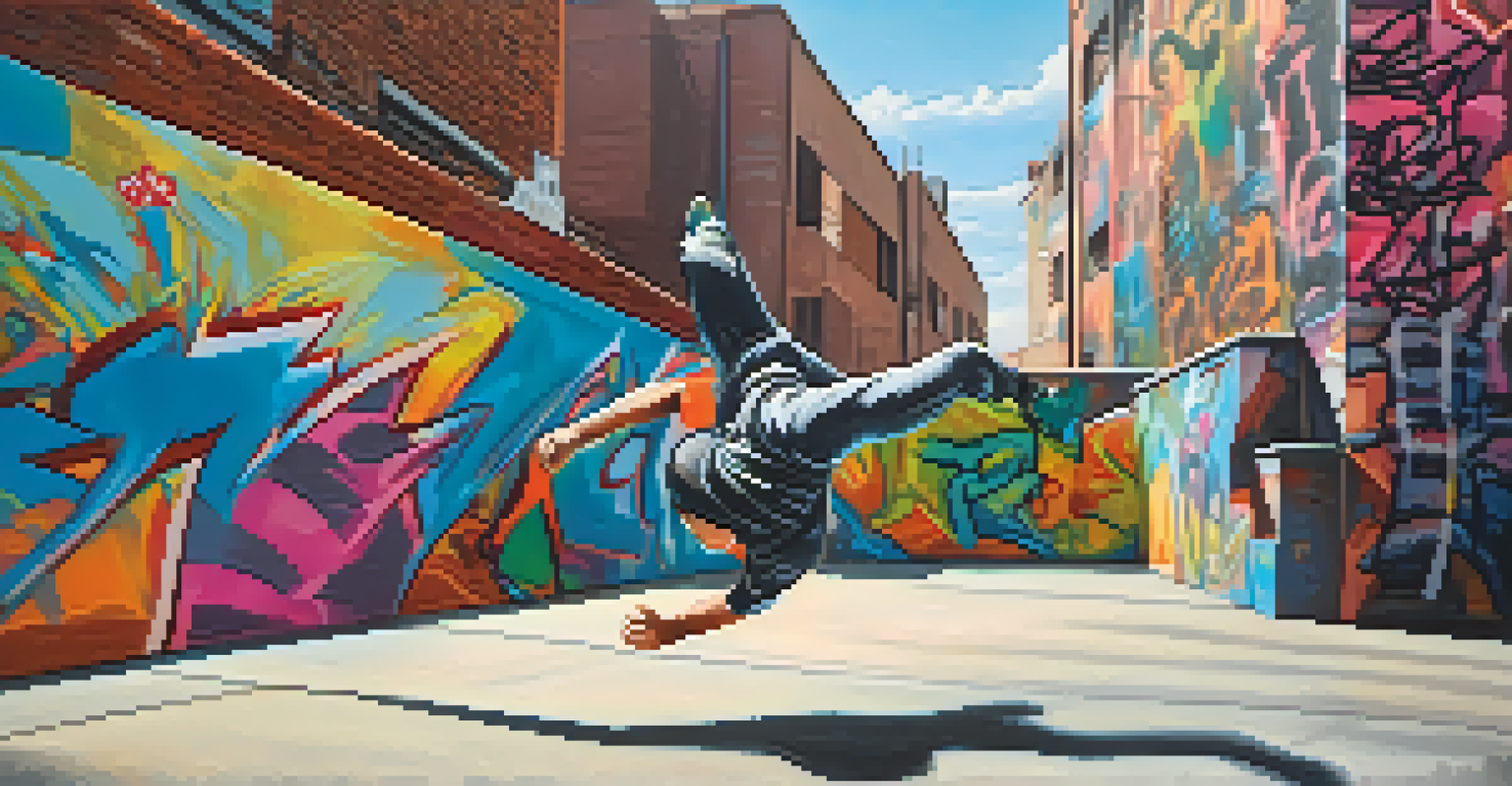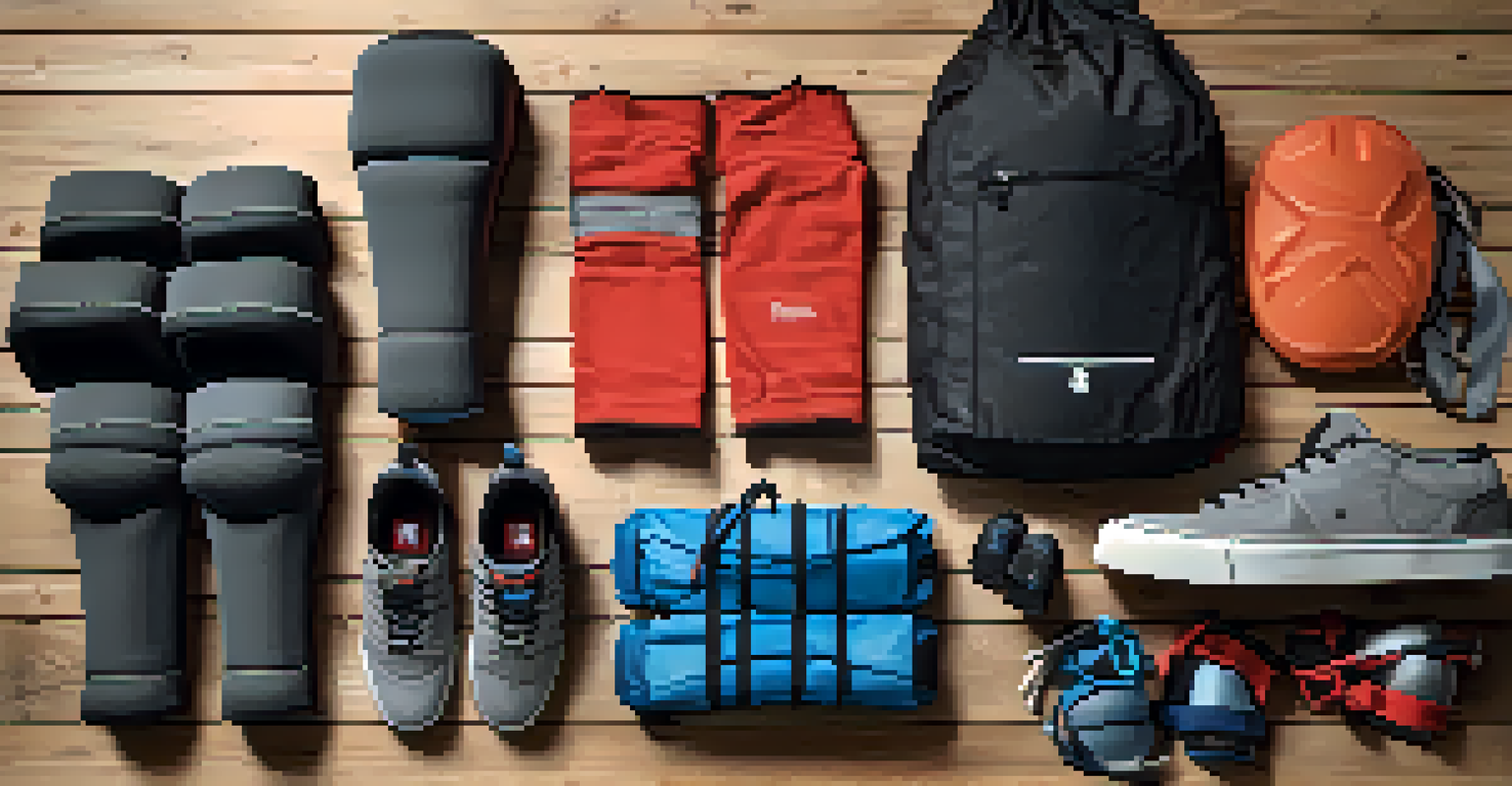How to Choose the Right Gear for Parkour Training

Understanding the Basics of Parkour Gear
Parkour gear is more than just stylish apparel; it's about functionality and safety. Choosing the right equipment can significantly enhance your training experience. Think of it like wearing the right shoes for running; the right gear makes all the difference.
The best way to predict the future is to create it.
You'll want to start with understanding the types of gear available, from shoes to clothing and safety equipment. Each piece of gear plays a specific role in supporting your movements. For example, shoes designed for parkour often have a flat sole for better grip and flexibility.
Ultimately, selecting the right gear means considering your personal style and comfort while ensuring it meets the demands of parkour. A good fit can help you perform your best, allowing you to focus on your training instead of adjusting your outfit.
Choosing the Right Footwear for Parkour
When it comes to parkour, your shoes are your best friends. They should be lightweight, flexible, and provide excellent grip for various surfaces. A shoe with a flat sole helps you feel the ground better and enhances your balance during jumps and landings.

Consider shoes that feature a good amount of cushioning, which can absorb the impact of jumps and falls. You might also want to look for a breathable material to keep your feet comfortable during longer training sessions. Remember, you wouldn't wear heavy boots for a sprint, right?
Choose Functional Parkour Gear
Selecting the right parkour gear enhances safety and performance, allowing you to focus on your training.
Lastly, make sure to try on different styles and brands to find what feels best for your feet. A shoe that works for one person might not work for another, so paying attention to your own comfort is key. After all, your feet will be doing a lot of the heavy lifting!
Selecting Comfortable and Durable Clothing
Your clothing should allow for a full range of motion while also being durable enough to withstand the rigors of parkour. Look for materials that are stretchy and breathable; this will help keep you cool while you’re practicing those flips and vaults. Think of it like wearing a second skin that moves with you.
Success is where preparation and opportunity meet.
Avoid overly baggy clothes, as they can get caught on obstacles or impede your movements. Instead, opt for fitted yet flexible options that won't hinder your performance. Many parkour practitioners prefer athletic wear designed specifically for high-impact activities.
Lastly, consider the weather when choosing your training gear. In colder weather, layering is key, while in warmer conditions, lightweight, moisture-wicking fabrics are ideal. Being comfortable in your attire can help you focus on mastering your techniques without distractions.
Protective Gear: Why It Matters
While parkour is all about fluid movement, safety should never be overlooked. Protective gear, such as knee pads, wrist guards, and helmets, can make a significant difference in preventing injuries during training. Think of it as an insurance policy for your body.
Even if you’re just starting out, wearing protective gear can give you the confidence to try new moves without the fear of injury. As you progress, you may find that certain areas of your body need more protection based on your training style. It's important to listen to your body and adjust your gear accordingly.
Invest in Quality Equipment
Quality gear may come at a higher price, but it typically offers better durability and comfort for your training.
Lastly, remember that while protection is essential, it shouldn't restrict your movement. Look for lightweight options that provide a good balance between safety and flexibility. This way, you can push your limits while keeping yourself safe.
Investing in Quality Gear vs. Budget Options
When it comes to parkour gear, investing in quality often pays off in the long run. Higher-end products may come with a steeper price tag, but they generally offer better performance, durability, and comfort. Think of it like buying a good quality bike; it may cost more upfront, but it will last longer and perform better.
On the other hand, budget-friendly options can be great for beginners or those still figuring out their style. Just ensure that these options don’t compromise your safety or comfort. If you find a lower-priced item that meets your needs, it can be a smart choice.
Ultimately, weigh your options carefully and consider factors like how often you'll train and your level of commitment. Sometimes, spending a little more for gear that supports your training can enhance your overall experience and performance.
Reading Reviews: Finding the Best Gear
Before making a purchase, it’s wise to read reviews from other parkour enthusiasts. Their experiences can provide valuable insights into the performance and durability of gear. Think of it as getting recommendations from friends before trying a new restaurant.
Look for reviews that discuss specific features, such as comfort during training or how well the gear holds up after frequent use. Online forums and social media groups dedicated to parkour can also be great resources for feedback and recommendations.
Try Before You Buy
Testing gear in-store ensures a proper fit and functionality, reducing the chance of discomfort during practice.
Additionally, don’t hesitate to ask your fellow practitioners for their opinions. They may have tried several products and can guide you toward brands that are known for their quality and performance.
The Importance of Trying Gear Before Buying
Whenever possible, try on gear before making a purchase—especially shoes. Different brands and styles can fit differently, and what looks good online may not feel comfortable on your feet. This is similar to trying on clothes before buying them; you want to ensure the perfect fit.
In addition to shoes, consider testing out other gear like clothing and protective equipment. Movement is key in parkour, and you want to make sure that everything you wear allows for complete freedom. A quick test run in the store can save you from making a costly mistake.

If trying gear in-store isn’t an option, check the return policy when buying online. Many retailers offer easy returns if the gear doesn’t meet your expectations. This way, you can shop with confidence, knowing you won’t be stuck with something that doesn’t work for you.